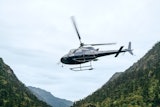
 Robert Rensa, BD Manager of Wire Management Products, Panduit
Robert Rensa, BD Manager of Wire Management Products, Panduit Standards have been the core of every technological revolution. For the automotive industry, it all began with the internal combustion engine. From there, powertrain and digital revolutions have occurred, and breakthroughs in the evolution of the autonomous car are just upon the horizon. When looking at energy production, we’ve gone from fire to steam to coal to petroleum to fossil fuels, and the list goes on and on. Not far behind, telecommunication now includes the transmission of information by wire, radio, optical and other electromagnetic systems.
With the important responsibility of serving a wide range of segments, wire management products are undeniably crucial to maintaining organization, functionality and safety in the environments they serve. When industries have consistent benchmarks for performance and quality, they thrive. Yet wire management products have been overly complicated by their base standards, which includes various regional standards from the Association of Standardization and Certification (ANCE-Mexico), the CSA Group ((formerly the Canadian Standards Association), International Electrotechnical Commission (IEC), and Underwriters Laboratories (UL). Due to this complexity, wire management customers have not had a consistent benchmark of performance and quality, often resulting in unexpected total business costs. Because of standards not being harmonized, the industry was being served by varying benchmarks for compliance testing and certifications.
Reducing the number of separate standards and testing requirements will provide a substantial opportunity for manufacturers to promote products that are high value, have consistent quality, and have a safe and efficient application, while also ensuring product performance and high quality based on the successful completion of test standards. Now, with the recent publication of ANSI/UL 62275, wire harness manufacturing can finally experience its own.
Up until now wire assembly has been a very manual industry, relying heavily on people and processes to manufacture the materials. But with ANSI/UL 62275’s adoption of IEC 62275 in the U.S. and harmonizing of CSA C22.2 No. 62275 (Canada), NMX-J-623-ANCE (Mexico) and IEC 62278 (Europe), a substantial opportunity has appeared for manufacturers to promote high value, consistent quality, and a safe and efficient application.
This harmonized standard for cable ties for electrical installations - including plastic and metallic cable ties, mounts and integral cable tie mounts - will provide wire harness component manufacturers test procedures to conduct rigorous tensile strength, minimum operating and installation temperature, vibration, corrosion, flame and plenum tests, among others, through one organization.
As a result, when a global component supplier is selected to ship to the U.S., Canada, Mexico, Europe, or other regions that accept these harmonized standards, customers can be assured of the delivery of a product that is high quality and of performance at lower installed costs with reduced risks. Without harmonization, a wire processing company may be required to use different products based on the end destination.
Base standards for wire management products have historically always included regional standards, resulting in varying benchmarks for compliance testing and certifications. Due to this complexity, wire management customers have not always had the consistent benchmark of performance and quality that they deserve, which has often resulted in unexpected total business costs.
Now, by reducing the number of separate standards and testing requirements, high quality and product performance based on the successful completion of test standards has been ensured. While all regional standards, including ANCE/UL, CSA and IEC, having a stability date of December 2018, updated standards will be introduced in 2019. As this switchover nears, it is vital that we start educating customers on these requirements now.
Ahead of the anticipated changes customers need to learn the benefits for their applications. Not only will this provide customers with better products, but we believe that the availability of this harmonized standard will encourage a whole new host of innovation across different sectors - from energy to military and defense and aerospace, to medical devices to the broader industrial market.
History shows that we all win by embracing standards harmonization. Now is the time for implementation and education so that innovation can be right around the corner.
Learn more about global standards harmonization for wire harness here.
Robert Rensa is the Business Development Manager of Wire Management Products for Panduit, a global provider of electrical and network infrastructure solutions. Robert has more than 40 years of work experience in sales, product and business management at industry leading companies including Panduit, Eaton, and Furnas Electric (now Siemens Automation). He is also active in industry standards bodies including as the Chairman for NEMA 5FB-2-Wire Management Products, a committee member for NEMA 5FB-2 Technical Committee, Chairman for CANENA-THSC 23A-62275 and technical expert for USNC-SC23A-TAG-WG17 to IEC.























